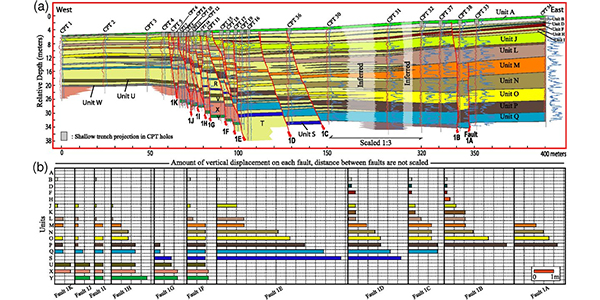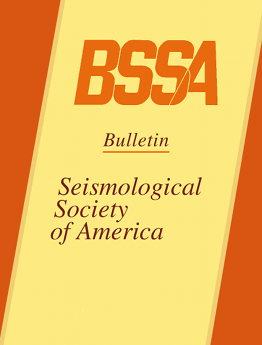
-Publication-
Straightening of the Northern San Jacinto Fault
Gayatri Indah Marliyani* and Thomas K. Rockwell
Department of Geological Sciences, San Diego State University, 5500 Campanile Drive, San Diego, California 92182 gayatri.marliyani@asu.edu trockwell@earth.sdsu.eduNathan W. Onderdonk
Department of Geological Sciences, California State University Long Beach, 1250 Bellflower Boulevard, Long Beach, California 90840‐3902 nate.onderdonk@csulb.eduSally F. McGill
Department of Geological Sciences, California State University, San Bernardino, 5500 University Parkway, San Bernardino, California 92407‐2318 smcgill@csusb.eduAbstract
We investigate a releasing stepover between the Casa Loma and Claremont strands of the northern San Jacinto fault zone to evaluate the late Quaternary structural evolution of the fault zone, and to assess the likelihood of a rupture jumping across the stepover. Our new cone penetration test (CPT) and trench observations along the Claremont fault at Mystic Lake indicate that the main strand of the Claremont fault has jumped nearly a half kilometer westward into the San Jacinto releasing stepover during the late Quaternary. Multiple faults are inferred from the CPT data within a small sag at the northeast side of the stepover that cuts through younger stratigraphy to the west of the basin‐bounding fault near Mystic Lake. Previous seismic‐reflection data also suggest the presence of a young fault that cuts basin strata beneath the middle of Mystic Lake farther west of our study area. Numerous tectono‐geomorphic features observed in satellite and Light Detection and Ranging Digital Elevation Model (LiDAR DEM) imagery are interpreted to delineate the location of the currently active faults, including a zone of faults that cut across the basin from the northern end of the Casa Loma fault to the Claremont fault. Seismicity observations suggest the presence of many faults within the stepover zone. Finally, new paleoseismic data from the Mystic Lake site suggest that some late Holocene earthquakes may have jumped the stepover. All of these observations suggest that the San Jacinto stepover, which has been used as the primary basis for segmenting the northern San Jacinto fault zone, is being bypassed and that the fault zone may now be capable of larger earthquakes than previously expected.
 Straightening of the northern San Jacinto Fault, California, as seen in the fault-structure evolution of the San Jacinto Valley stepover
Straightening of the northern San Jacinto Fault, California, as seen in the fault-structure evolution of the San Jacinto Valley stepover
Bulletin of the Seismological Society of America(June 2013), 103(3):2047-2061

